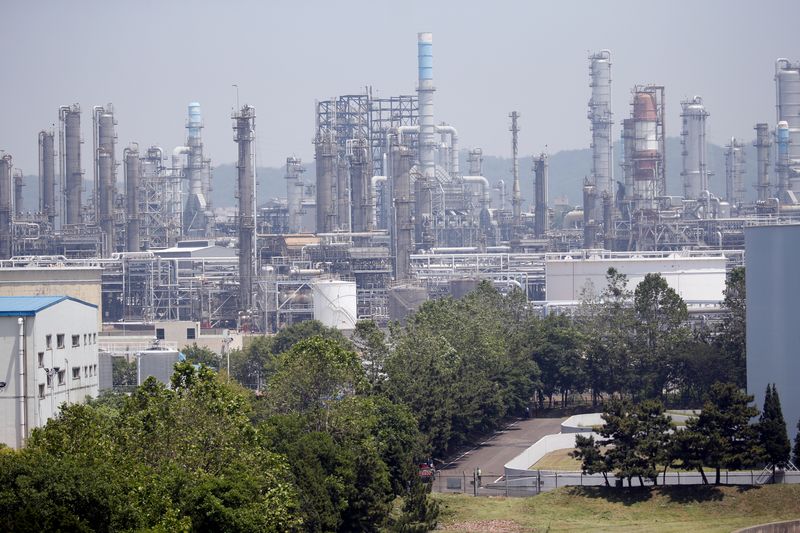
© Reuters. FILE PHOTO: A factory is seen in Incheon, South Korea, May 30, 2016. REUTERS/Kim Hong-Ji/File Photo
By Jihoon Lee
SEOUL (Reuters) – South Korea’s factory activity shrank in September at the mildest pace in 15 months, as the decline in output and orders softened, a private business survey showed on Wednesday, providing hopeful signs for a turn in economic fortunes.
The purchasing managers index (PMI) for South Korean manufacturers, compiled by S&P Global, stood at 49.9 in September on a seasonally adjusted basis, up from 48.9 in August.
The sub-50 reading meant activity contracted for the 15th straight month, the longest downturn in the survey’s history stretching back to April 2004, but by the slowest pace in the streak.
“The health of the South Korean manufacturing sector was broadly stable at the end of the third quarter of the year,” said Usamah Bhatti, economist at S&P Global Market Intelligence.
“However, this masked continued weaknesses in both production and demand.”
The survey result comes as South Korea’s exports slowed their fall in September with the softest decline in a yearlong downturn in a hopeful sign for recovery momentum.
Asia’s fourth-largest economy is expected to grow 1.4% in 2023, down from 2.6% in 2022, according to forecasts by the central bank and the government, with the combination of weak global demand and tepid domestic consumption delaying prospects for a strong revival.
Sub-indexes showed output and new orders fell for the 15th month and 17th month, respectively, but their declines were narrower than the month before.
Highlighting one of big challenges facing South Korea, new export orders dropped by the most in three months amid weak demand from key markets for manufactured goods, notably China, Japan and the United States, according to the survey.
On the inflation front, input prices rose at the fastest rate in eight months, reflecting rising prices for raw materials, oil and electricity, alongside currency weakness.
That came along with output prices rising for the first time in five months, with firms commenting that output charges were raised in an attempt to pass higher operating expenses through to clients.
Stocks of purchases rose by the biggest since April 2021 and the quantity of purchases by the biggest since July 2022, as firms looked to hedge against further price rises.
Employment increased by the fastest pace since May 2013, with panel members attributing it to vacancies being filled ahead of an eventual return in demand.
A measure of manufacturers’ optimism for future output pulled back in September, after hitting a 14-month high in August.


